You come back home, tired from work, and all you can think of is sinking into your bed with a good book. You ask your 3 year-old-son to wash his hands before sitting at the table. What an outrageous request! “If you don’t wash them RIGHT NOW, I’ll wash them!” He’s screaming, you’re screaming. How can you handle such crises and difficult moments without losing your temper? How can you calm down and help your children control the storm of emotions? Let’s see 10 ways to calm down – for the whole family!

Table of Contents
What could have triggered the crisis?
One morning like many others. “Mom, are we going to school today?” My little one asks me first thing once his eyes are opened. The angry look leaves no doubt: I want to stay at home!
Fortunately, we can take the luxury of having breakfast together before realizing it’s late and we’re all in our pajamas.
One way or another, we manage to get to the front door with the right clothes and enough time to go to school and office on schedule.
Mom, I want to take my bike !
My whole body gets ready for a fight or flight reaction.
Honey, you have to practice a little bit before, it’s better if you come with me on the child seat for the moment. Tomorrow, if we can get out a little earlier, we can take your bike ok ?
Obviously, the stubborn and definitive answer is NO.
After a few attempts, I had to take him and put him on his seat…
C-A-T-A-S-T-R-O-P-H-E
Screams and desperate cries, scratches, kicks .. The ultimate crisis.
The one where you must be able to calm down before you can calm your kid .. not easy when your child’s pulling your hair as if he wanted to shave you bold.
To any meltdown, a hidden need.
All the parents I know have lived, at least once in their life, one of those crises.
The main features are immediately recognizable:
-
You are in a public place with a lot of people
-
You have little time, you’re in a hurry but.. not your kids (my kids are in a hurry only if it’s screen time).
-
Your refusal triggers a disproportionate reaction from which it is difficult to calm down without collateral damage.
If I hadn’t read dozens of books about parenting, I’d just label the behaviour as “tantrum”.
A sentence read and re-read in my beloved book by Isabelle Filliozat taught me that we must never be fooled by appearances: behind each cry, there is a hidden need.
Why investigating further when all you need are ways to calm down ?
My child is neither angry nor aggressive in general.
But we just moved, had to say goodbye to the world he was attached to, a let go of a few important friendships – without, of course, having been able to decide any of this.
At school, they speak a language he does not understand yet.
If I look at the situation as a whole, I understand that my son is not only a little angry; he lost control of his routine, of his safety.
And so, he seeks control over little things – like riding a bike to school – and his anger explodes in front of a our denial.
The perspective, in this case, changes completely!
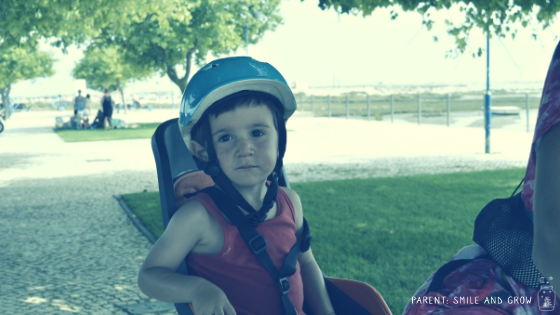
Connected : Tips and tricks to have your kids cooperate more
Ways to calm down? Empathy
Looking for the unmet need that triggered the crisis (our own or the child’s) has the first effect of putting ourselves in the other’s shoes.
And this serves to counteract the effect of mirror neurons.
Mirror neurons are special neurons that are activated either when an individual performs a certain action and when he sees another person doing it. The activation of the brain is the same.
To simplify things, it is much more difficult to calm down when the person in front of us is in a state of nervous breakdown. It takes extra effort to control yourself.
Here comes empathy: instead of thinking “Gosh, another of his terrible tantrums, this child is impossible!” we can switch to “poor thing, it must be very hard for him ( and for us)”.
There is also another element. A child does not yet have all the fully developed brain abilities. Tears are a way to “calm down”, that is to say to unload all the accumulated tensions (in the case of my son, anger for immediate change, discomfort for having to face an environment where he has troubles expressing himself, etc.).
At this moment, it is difficult for your child to calm down on his own. He needs to be secured and protected from his emotional storm.
The trick? A hug : physical contact allows the release of oxytocin, with its soothing effect. The difficulty is to be able to stay calm without stiffening while our kid screams and kicks.
Connected : do empathy and kindness still have a role today ?
What happens if you just react?
It is very difficult to calm down or stay calm when the person in front of us attacks us. If we “forget” to consider the situation as a whole, we will react by attacking in return.
Come on, this is a classic example even among adults! When one gets home late from work, tired after a long discussion with a difficult client; and the first thing he says is “How come dinner’s not ready yet? ” A kind declaration of war isn’t it ?!
But not if his spouse looks at the big picture. At the fact that he is generally a supportive companion, that he offers to cook most of the times; and that he’s facing a difficult situation a work.
Recalling the context will allow to “not taking it personally”.
With children who aren’t able to control themselves, it’s the same thing !
What happens if you react instinctively instead? The quarrel begins.
This triggers a vicious circle: the child cries and cries to release the tension due to an unmet need, we threaten him to stop, he feels badly or wrongly accused, and this, instead of calming him down, aggravates the crisis..
You can print your own poster too !
And what shall you do when the meltdown explodes?
For example, if your daughter wakes you up for the third consecutive night at four o’clock in the morning, when the alarm rings at five, shouting that she can’t sleep on her own? How can we focus on our empathy when our instinct is to scream in return?
Let’s put something straight first: we can always improve, but we’ll never be perfect.
If you were hoping to regain the calm of a Tibetan monk in a few simple steps, forget it. (And anyway I’m sure the Tibetan monk would at least raise his eyebrow under certain circumstances).

Point two. In case of emergency, you will always start on autopilot. It’s inevitable, our brain is wired like that.
Therefore, if you want to break the vicious cycle mentioned above and handle the crises more calmly, you have to switch your autopilot, that is to say change the type of reaction.
We all react in a certain way to stimuli by habit – perhaps an unconscious habit that has been consolidated for decades because we have seen uncles of grandparents or teachers do so.
And changing the habit requires some effort, but it’s not impossible. It takes strategy.
If you want to keep calm, you plan your strategy ahead.
Ahhh, when I hear the word “Plan” my eyes shine (and my husband suddenly has a very important and long meeting at work).
I would reason on two fronts:
-
Needs vs. expectations
-
problems and goals
What do I mean?
Needs vs. expectations
We have seen how undesired, aggressive behavior is the symptom of a need.
While trying to understand what this need may be, keep in mind the evolving abilities and natural needs due to the child’s stage of development. The same also applies to adults : we don’t all have the same limits and capabilities.
Observe other children of the same age, and think about your own expectations. It is possible that they don’t match the actual abilities of your kid.
A trivial example: if you don’t know anything about newborns, you may be surprised to see your baby need more milk not even an hour after the last feed. You might expect her to be able to “wait” longer, and take her reaction as “excessive” – whereas it’s your expectations who aren’t realistic.
The same applies in so may circumstances : if you grew up in the mountains and are used to leaving for long hikes every weekend, you can find exaggerated that your friend complains and stops after a couple of hours walking, if you don’t take into account that that’s the first time he sets his foot on a mountain trail.
(For example, I taught my husband how to ski on a black Olympic track, the only one open because of a big snowfall; thinking that, worst case, it would have taken us a little bit longer…
Fortunately, he is still alive and can blame me several times a year and I still find his reaction exaggerated. ;)p )
Problems and Goals
Once you have clarified this point, you can determine who has the problem, who has the need : me or the other person? (or both?)
If my child screams and squirms, there’s certainly something wrong that triggered the crisis.
On the other hand, if I’m obsessed with getting to places always on time and become nervous every time it takes hours to leave the house, I can say that frustration is my problem.
In general, if you want to avoid triggering power games, it is always better to focus empathetically on the other person’s problem (I report the wise advice of psychotherapist Isabelle Filliozat on this subject).
This clarified, define your goal (as a parent, as a partner, etc.): if it’s to eliminate your frustration, restore calm, strengthen your child’s independence, strengthen your relationship, teach a value that is important to you or a skill, etc.
You can’t decide on the different attitudes you need to adopt, if your goal isn’t yet clear – there is almost never a single solution !
Finally, an old phrase but a still relevant one : know yourself.
Identify those situations that easily make you lose your patience, or cause distress in your child.
To put it simply: if you don’t want your child to eat chocolate, don’t leave a big bar at his sight. .
If it makes you crazy to find the living room filled with toys, you can of course gradually teach your children how to clean up (but beware! Before they’re 4 or 5 years old, there’s no way that they’ll be able to do it on their own); better yet : store most games directly in their room. And so on.
The 10 techniques to calm yourself down
That being said, here are some ways to calm down in the midst of crisis !
#1. Go away for a little time
If you can, go away for a moment. Give yourself a little time out. I sometimes lock myself in the bathroom. Of course, if you are dealing with a baby and you are alone, it will be more difficult. Then try at least to close your eyes and think of a beautiful moment of tenderness (a nice oxytocin refill, it works!)

#2. Breathe
It’s so simple, but we often forget it. When we are stressed, we tend to hold our breath. but in reality, bringing back oxygen to the brain is essential if we want to calm down.
Connected : about the benefits of a good deep breath
#3. Drink
I meant a good glass of water, of course! Water is good for the brain. And besides, sometimes an irritable child is a thirsty child..
#4. Smile
When we are happy, we smile. But the opposite is also true: when we smile, the brain reacts to the movement, and releases neurotransmitters that make us feel better. Counter-intuitive, to smile when you want to cry, but..
Connected : smiling is one of the 5 simple gestures you can keep in mind if you need to regain some energy!
#5. Move
Stretching, pulling your shoulders back, making big gestures with your arms – it’s all helpful to let go of any accumulated anger.
It can be helpful and enjoyable to include moving game moments that promote brain development in our routine. (the “brain gym”)
Some suggestions in this video!
#6. Go for a walk
If you can, take a nice walk in the open air. This will help put things into perspective (and maybe clarify your mutual needs)
#7. Physical contact
Perfect for all ages, it is especially important for children. They need to be contained, to feel that you are with them, that you support them and accept them at all times. Not to mention the oxytocin’s effect as mentioned above.
Connected : The magic of a hug
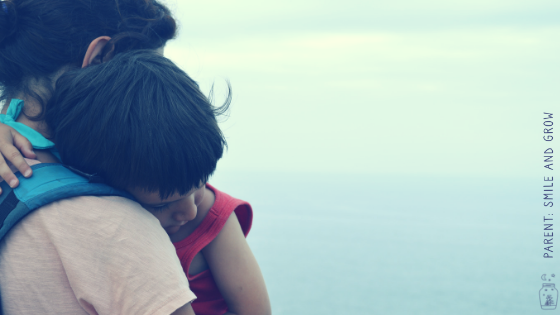
#8. Close your eyes
Concentrate on yourself, on your physical sensations, on what the body is telling you. Even if it’s just for a few seconds, it helps to calm down.
#9. Keep your voice low
More than the words themselves, your tone of voice matters a lot! If you ask your children not to shout, while shouting, you send an incoherent message. Try to whisper instead. If that triggers an imitation reaction, you win.
#10. Remember a few, critical words
Stop it now! These are words that we often have in our arsenal of automatic responses.
I’m training myself to replace them with “All right, breathe.” among other things, I say it more to myself as a mantra … But at the fifth or sixth repetition, it also sinks in into my child’s brain.
The second sentence to memorize is “I’m feeling .. because”. It avoids starting with “ You always do …! ” or “ You are ..! ” (usually followed by a negative adjective)
Instead of blaming the other, by triggering the famous vicious circle of reproaches, let’s talk about how we feel. I am angry because I asked you to put your toys away and you didn’t do it. I feel like you don’t listen to me.
It’s great to let go of your tension.
That’s what happens to me: as I feel the sheer wave of frustration raise, I begin with my sentence : “I’m feeling…”. Then I have to concentrate to understand exactly why I feel a certain way. And while I think about it and express myself, I calm down.
My 3-year-old son may not have understood anything about the psychotherapy monologue I’ve been pouring in the meantime, but I feel better. It’s a result!
Conclusion
Living with someone is an eternal confrontation of needs – they do not always coincide, they are not always clearly expressed.
We may have a hard time with children because they depend on us not only for the satisfaction of these needs, but also for us to teach them how to identify and understand those needs. And because our needs have to be put aside for a moment.
Awareness is the first step towards change. A little research and reflection can be helpful if then there’s less crying and more smiling!
A visually stunning poster to help your kids memorize their strategies, you can get it here!
Resources and references
I share with you some articles that I have taken as a reference, and useful readings as always! Links to Amazon in this page are affiliate links.
But first, I ask you 3 things:
-
Share this post if you found it useful!
-
What do you think? I’d really like to hear about your experience 🙂
-
You liked the article and you’re interested in joining the club and receiving food for thoughts and inspiring suggestions directly in your inbox? It’s over here!
Articles :
-
Really awesome tip here from a children’s mental health counselor.
-
A really helpful guide for dealing with meltdowns, tantrums and aggression in a child with autism
-
How to deal with a child’s meltdown? A great post for when your child gets easily distressed
-
These strategies are for you, when having to cope with stress (i.e. non compliant kid )
-
If you’re still overwhelmed, go on and read here!
Books :
The books I used as a reference for this post aren’t available in English. I looked up then at their suggested bibliography :
-
“Change Your Brain, Change Your Life” if you want to understand better the reasons behind anxiety, depression, anger, obsessiveness or impulsiveness and modify your reactions.
-
“Brain-Based Parenting: The Neuroscience of Caregiving for Healthy Attachment” – or, what really happens (chemical reactions, hormones and so on) when we react the way we do!
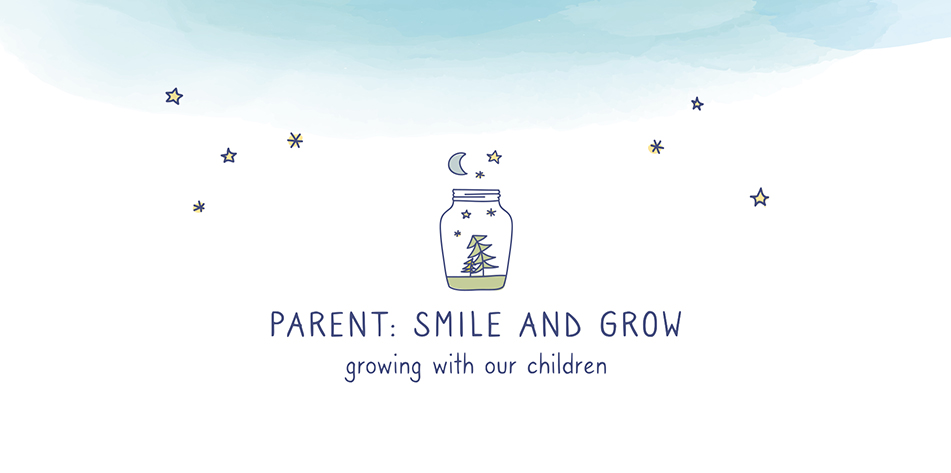
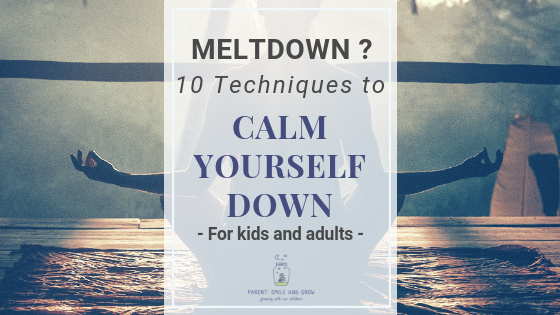


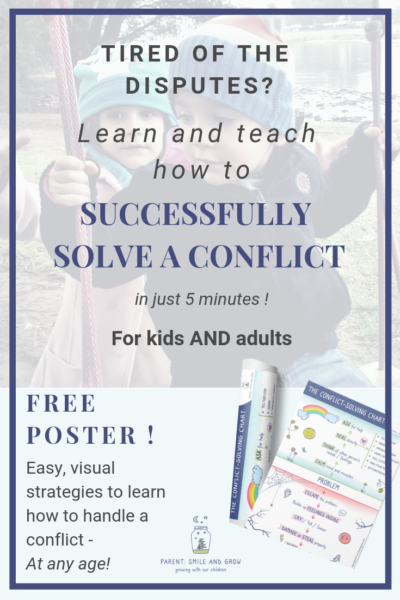
Eye contact and a touch make a lot of difference in calming kids. I noticed that during meltdown, simply acknowledging and saying that, “I know you’re hurt. I’m sorry you’re upset”, are very helpful. It’s a hard task but I believe every parent knows what’s best for their own kids.
Yes you’re right, eye contact and acknowledging the feelings can have a huge impact!
I never had kids because patience wasn’t my thing. As I get older, it gets easier because losing my patience is just a huge waste of energy, and I’m not into that. My energy can be used in far more positive ways.
I love the way you see losing your patience as a waste of energy,I think it can be a great motivator to keep calm when you look at it this way!
They always say that life is mostly about how you respond to situations and being calm can most definitely be more effective than anger, worry, and stress.
No doubt!
I love the tips on calming down! I definitely believe that is needed and necessary and will bring about results in a more efficient and teachable way.
Thank you Kari!
I too get worked up at times when the other person refuses to relate to my views.Some great tips which I would probably use from now to stay calm.
Yes I do believe the way we respond to children has so many common points to the way we relate with other adults as well, with the due comparisons ; as much is about dealing with our own emotions and feelings
What a wonderful post! I love that phrase about behind every cry there is a need. This — and all of your wonderful techniques to cope with this kind of behaviour — could very well be applied to adults, as well. I’m going to try it.
Thank you Lene!! Let me know how it goes if you try it 🙂
These are great tips. I have always chose to stay calm and not utter any word when I’m angry as unexpected words may come out of my mouth.
Thank you for these wonderful tips.
That’s a great decision, not always easy to keep it in mind on the spot so if you’re conscious about the importance of your words, I’d say you are well ahead of many of us!!
Great reminders and tips for cooling down. Nothing is worse than when your kid is having a meltdown in public. Sometimes it’s hard to remember that you are the adult and need to take control of the situation!
Yes I agree.. Sometimes I catch myself into the very same reactions my children have, and I really have to remind myself that I’m the adult LOL!
It must be very difficult for many parent when kids having tantrums. I cant remember the time tantrums is allowed in our home. My Asian Mom will speak as in her firm low voice and staring at us like it will eat us alive – who wouldn’t be scared if that?! So nope, tantrums isn’t wise option.
I can imagine!!! But actually, you confirm that keeping your voice low actually works better with kids than yelling at them 😉
I love that you talked about empathy in this! So many times we forget that children go through their own drama and they also need to feel heard. As an Auntie of three all under the age of 6 I’ve been through a ton of ‘tantrums’ and let me tell you the emotional response is automatic, and I have had to use a few of the calming techniques you listed to calm all of us down and then get to the root of the problem. It’s such a journey and mindset is a real thing in these situations.
Yes I agree, mindset is the key. And coming to a point where we know what triggers our own lack of control, in order to prevent it as much as possible, is essential. Also, empathy to me is key to stay patient, so it’s a real exercise but very effective
Our granddaughter is 2 1/2 and has started throwing tantrums. My husband and I were able to use some of these techniques when she refused to get in her car seat the other day. We didn’t raise our voices, but instead calmly got into the front seat, closed our eyes, and breathed deeply. After a few minutes, she was fine. As long as she was safe, a few minutes was not going to make a major difference.
This was much needed post for me! I am very impulsive. 🙈 Will try to follow the shared techniques next time!
thank you Shenal! I’m glad it helped
For me, the best thing is to not react immediately because that is always the emotional reaction. I take a minute and breathe and formulate a plan. I love these 10 techniques to calm down. I use most of them but will work on trying to use the ones I don’t! Thank you for this great list!